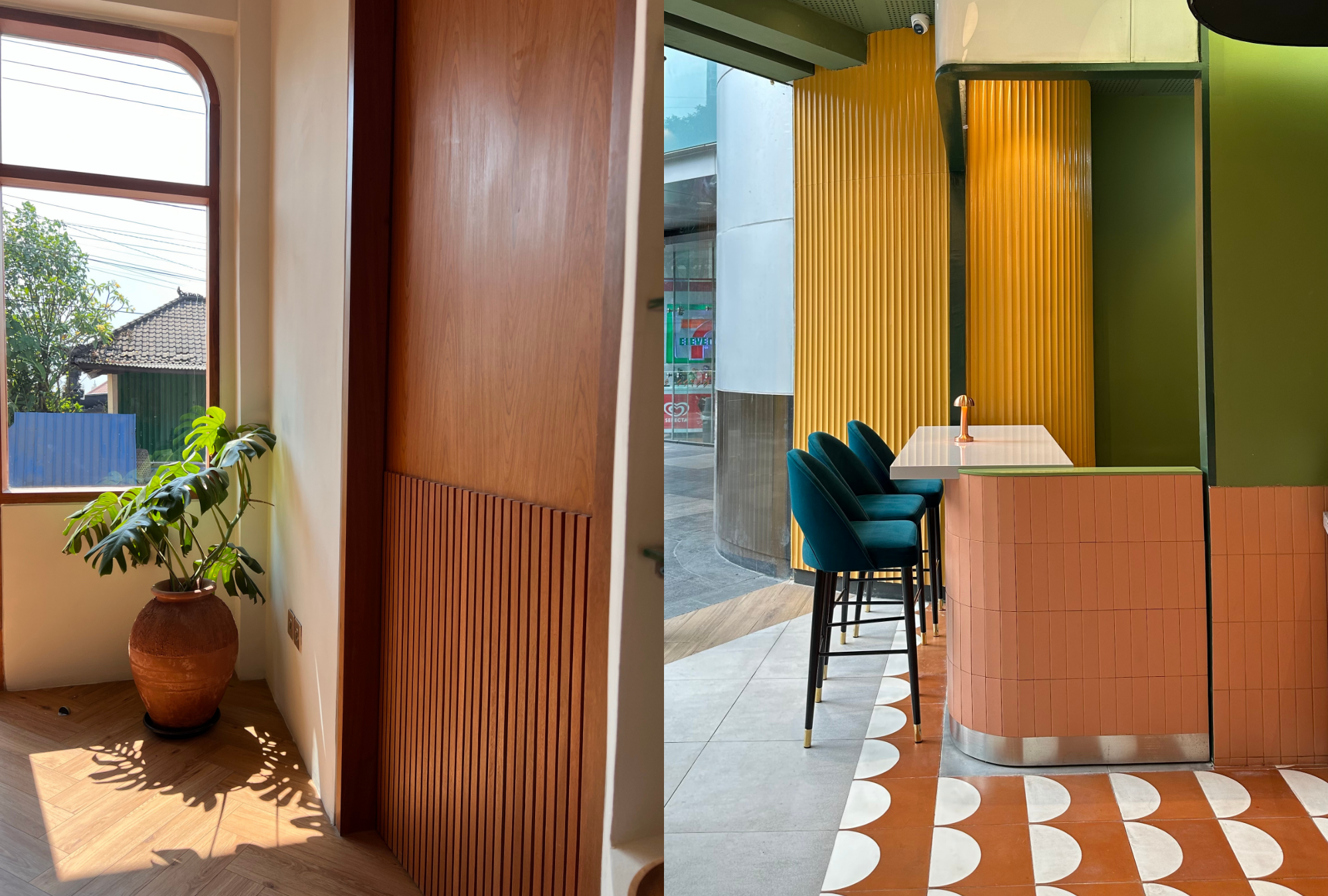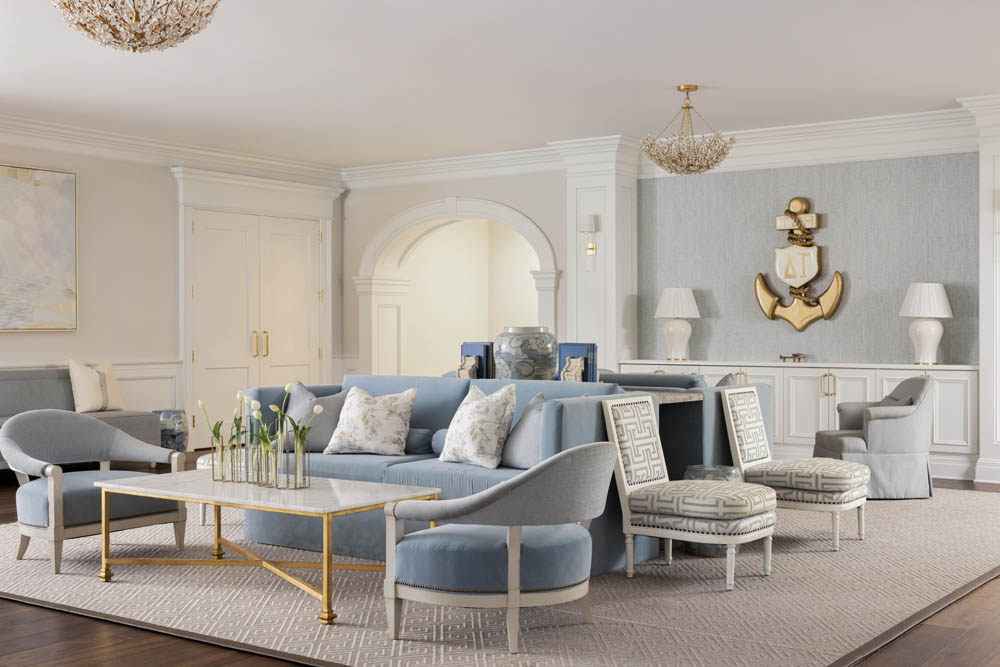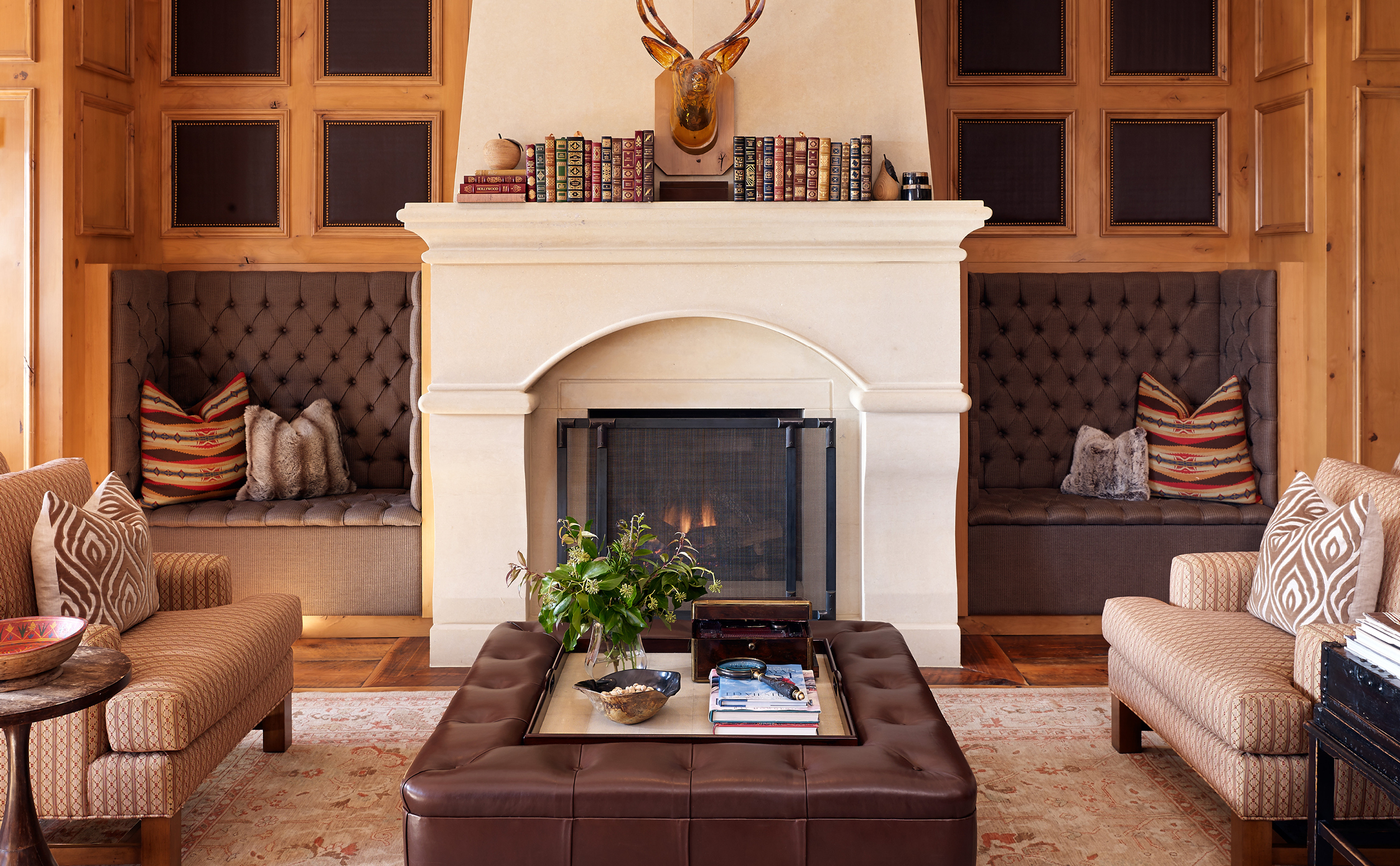In my travel as of late, I’ve been tracking a quiet but confident comeback in tambour paneling. Once reserved for mid-century cabinetry and vintage roll-top desks, tambour has recently re-emerged in a more elevated, architectural form. And it’s showing up in some of the most thoughtfully designed spaces across the globe.
Just last month, I spotted it on a stunning outdoor dining reception desk in Nova Scotia—proof that this textural treatment can feel fresh and unexpected even in open-air coastal settings. That same week, tambour made another appearance in my curated inspiration files: this time, dramatically lining the walls of a cocktail lounge at The Fifth Avenue Hotel in New York. The result? Chic, dimensional, and endlessly
photogenic.
In our own work, we’ve used tambour in some compelling and contrasting contexts. At the Old Palm Golf & Country Club, a space steeped in traditional design, tambour was used to add refined texture without disrupting the classic architectural narrative. On the other end of the spectrum, Sharon Cleland’s modern showroom on Hilton Head Island features tambour in a sleek, contemporary living room vignette—proof that it adapts just as effortlessly to clean lines and minimal palettes.
What makes tambour so versatile is its ability to shift in style depending on how it’s applied. Stained dark and paired with brass or marble, it reads elegant and traditional, perfect for more formal interiors or moody lounges. Painted in a matte finish or left natural, it becomes a sculptural element that feels airy and modern—ideal for minimalist spaces or earthy environments.
Whether used on full walls, reception desks, kitchen islands, or custom furniture, tambour adds an element of craftsmanship and rhythm that flat paneling simply can’t offer. It’s tactile. It’s timeless. And it walks the line between vintage and contemporary with ease.
We’re seeing more and more designers lean into tambour for its ability to soften a room, add subtle movement, and deliver a high-design moment without overpowering the space. It’s a small detail that makes a big impact—and it’s officially on our radar as a millwork must-watch.


